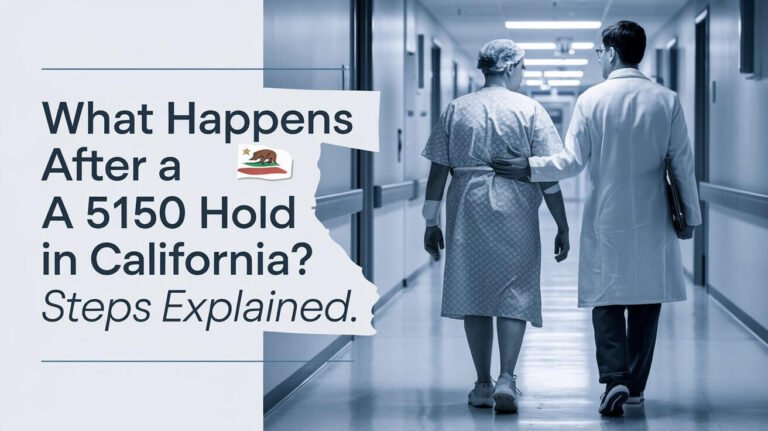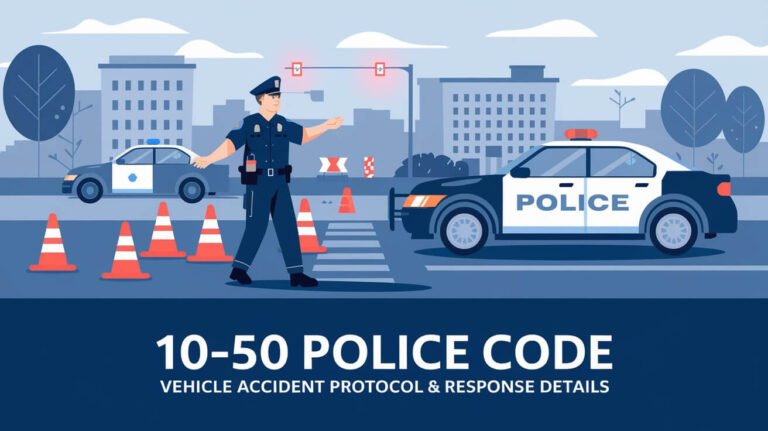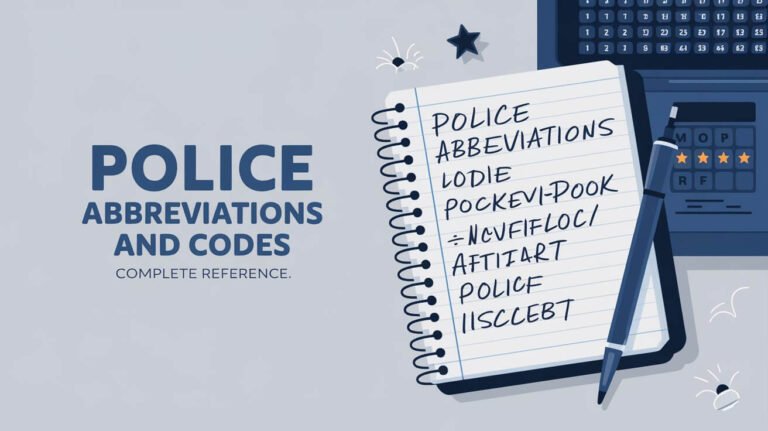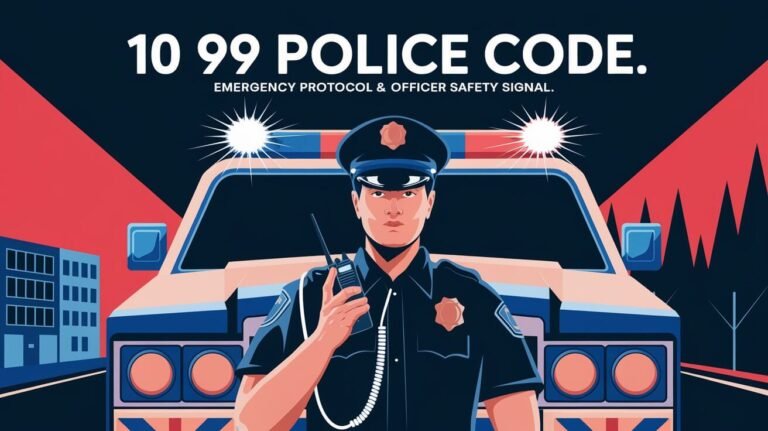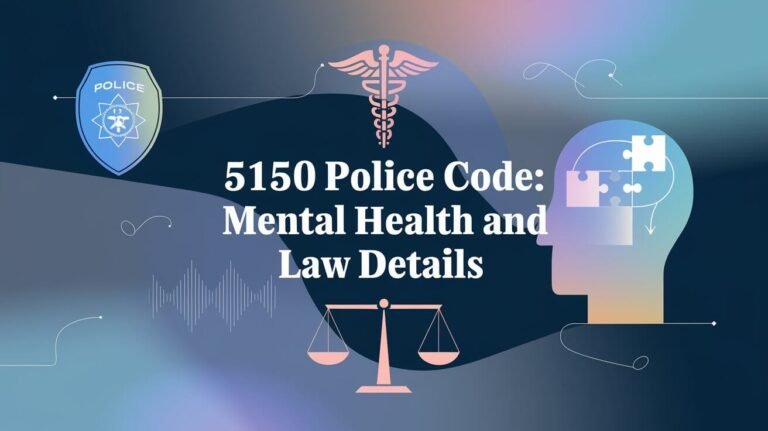Police Scanner Codes: Essential Signals and Their Uses

Police scanner codes are key in law enforcement talk. They help officers and dispatchers share important info fast. These codes vary by state, county, and precinct. They make sure everyone knows what’s happening and keeps everyone safe.
In 2016, the US Government suggested using plain language. But the 10-code system is very common. It and other codes are vital for police work every day.
Radio Communication in Law Enforcement
Law enforcement officials use radio communication to work together well. The police radio systems have evolved a lot. Now, they have standards that make communication clear and quick, even when things are stressful.
Evolution of Police Radio Systems
Radio communication in law enforcement has changed a lot. From old, heavy radios to today’s digital ones, there’s been a big leap. Now, radios have encrypted channels and GPS, making communication safer and clearer.
Purpose of Coded Communication
Coded communication, like 10-codes, is key in law enforcement. These codes let officers send important info fast and clear. They help keep radio traffic smooth, even in loud places.
Modern Communication Standards
Law enforcement uses modern standards for better radio communication. These standards focus on clear, secure, and easy communication. They help officers work together well, no matter where they are. This makes everyone safer.
| Radio Communication Protocols | Police Radio Systems | Coded Communication | Law Enforcement Standards |
|---|---|---|---|
| Digital frequency communication | Encrypted channels and GPS tracking | 10-codes and other police code systems | Clarity, security, and interoperability |
| Streamlined radio traffic | Improved coordination and response | Efficient transmission of critical information | Based on industry best practices and government regulations |
History and Development of Police Scanner Codes
The history of police scanner codes goes back over 80 years. It started in the 1930s. These tools were made for quick, efficient, and often secret communication in law enforcement.
Charles “Charlie” Hopper, an Illinois State Police officer, introduced the “ten-codes” system in the 1930s. The Association of Public-Safety Communications Officials (APCO) published it in 1940. They updated it in 1967, 1973, and 1974.
The ten-codes system became popular among law enforcement. But, it also caused problems. For example, the New York City Police Department (NYPD) used different meanings for some codes. This made it hard for departments to communicate well.
In 2006, the U.S. government suggested using plain language instead of codes. This was to help emergency response teams work better together. But, many departments are slow to change. They worry about officer safety and the cost of new systems and training.
Today, the history of police scanner codes shows how law enforcement’s communication needs have changed. From the ten-codes system in the 1930s to today’s efforts to improve communication, it’s a story of progress and challenges.
Police Scanner Codes and Their Classification
Police communication codes are key in law enforcement. They help officers share important info quickly. The “10-codes” are well-known, like 10-4 for “okay” or 10-20 for “location.” But, there’s more to police codes than just 10-codes.
10-Codes System Overview
The 10-codes system is a standard set of codes. It includes messages like 10-4 for “okay” and 10-20 for “location.” But, different places use different codes. For example, California uses a three-digit system with a radio alphabet for letters.
11-Series Codes Explained
The 11-series codes cover specific situations. For example, 11-41 means an ambulance is needed. These codes help dispatchers and officers work together better.
900-Series Emergency Codes
In emergencies, police use the 900-series codes. Codes like 904 for fire and 909 for traffic problems need police help. They quickly share urgent info and send the right help.
Though codes vary by place, knowing about 10-codes, 11-series, and 900-series gives insight into police talk.
Common Emergency Response Codes
In law enforcement, quick communication is important. Police officers use standardized emergency response codes to share important info fast and right. These codes, known as “police scanner codes,” are vital for coordinating emergency responses and keeping everyone safe.
Code 3 is a well-known code that means an emergency needs lights and sirens. It tells dispatch to make the call a priority and clear the way for officers. Code 4 means the situation is under control and no more help is needed.
Law enforcement also has special codes for different emergencies. For example, code 1141 means an ambulance is needed. Code 1144 signals a possible fatality. Code 1185 is for tow truck help, and AIFU means an accident needs further investigation.
| Code | Description |
|---|---|
| Code 2 | Respond quickly |
| Code 3 | Respond as quickly as possible (with lights and siren) |
| Code 4 | Situation under control, no further assistance needed |
| 1141 | Ambulance requested |
| 1144 | Call for possible fatality |
| 1185 | Tow truck assistance |
| AIFU | Accidents requiring follow-up |
These emergency response codes are the heart of police communication. They let officers share vital info fast and coordinate a quick, right response. By using these codes, law enforcement can solve emergencies efficiently and safely.
Dispatch Priority Codes and Signals
Dispatch priority codes help decide who gets help first and how many resources to use. Codes range from Code 1, where officers can respond whenever, to Code 5, a real emergency needing lights and sirens.
Code 1 Through Code 5 Usage
Police departments use different codes for different situations:
- Code 1: Respond at convenience
- Code 2: Respond non-emergency
- Code 3: Respond emergency, with lights and siren
- Code 4: No further assistance needed
- Code 5: Emergency response, immediate action required
Emergency Response Levels
Emergency response levels match the urgency of calls. For medical emergencies, “A” or “Alpha” means it’s not urgent. But “D” Delta and “E” Echo mean it’s a life-threatening situation. Police and fire also have levels for different emergencies.
Priority Classifications
Law enforcement uses more detailed priority systems. They have codes for things like assaults, seizures, overdoses, or car crashes. Each has its own response plan. This way, dispatchers can send the right help for each emergency.
Vehicle-Related Communication Codes
Vehicle codes are key in law enforcement. They help officers quickly respond to many incidents. Codes like 10851 for auto theft and 23152 for driving drunk are used to share important vehicle info.
Recent stats show that about 20% of NYPD Signal Codes are for crimes like robbery and assault. Over 15% are for non-crime incidents, like accidents and ambulance calls. About 5% are for license plate checks, to see if a car is stolen or has warrants.
| Code | Description |
|---|---|
| 10-50 | Vehicle accident |
| 10-85 | Towing request |
| 10-31 | Theft |
| 10-32 | Violent crime |
| 10-25 | Welfare check |
| 10-46 | Assisting motorist |
| 10-91 | Animal-related call |
Vehicle codes are vital for law enforcement to act fast in many situations. They help officers share vital info quickly. This ensures public safety and smooth traffic flow.
Special Incident and Situation Codes
Police scanner codes help share important info quickly. They cover critical incident protocols, safety signals, and tactical responses.
Critical Incident Protocols
Police face complex situations needing a quick, coordinated response. Codes like 10-33 for alarms or 10-70 for prowlers help officers share details fast. This ensures the right emergency response is started, leading to quick solutions.
Safety and Warning Signals
Keeping officers safe is a big deal. Police scanner codes have signals for dangers like explosions (10-80) or hazardous conditions (10-13). These alerts help officers stay safe and respond right.
Tactical Response Codes
For high-risk situations, like active shooters or hostages, tactical codes are used. Codes like “Code 3” for emergencies or “SWAT” for specialized units guide quick, effective actions.
Learning these special codes helps police communicate better, respond faster, and protect their communities more effectively.
Regional Variations in Police Codes
Police codes change a lot by region. This shows how different local law enforcement needs and practices are. Scanner fans need to know these differences to understand police signals well.
In California, certain penal codes are often used. For example, 187 is for homicide and 459 for burglary. Knowing these codes is key to decoding police scanner messages.
Across the U.S., police signals vary too. In Los Angeles County, over 120 agencies use the Los Angeles Regional Tactical Communications System. This includes the sheriff’s department, fire departments, and city police. They talk in plain English, unlike the old “10-code” system.
Using plain English is becoming more common. It helps agencies work together better in emergencies. They also share radio frequencies to talk smoothly across areas.
| Region | Police Code Highlights |
|---|---|
| California | 187 – Homicide 459 – Burglary |
| Los Angeles County | 120+ agencies use the LA Regional Tactical Communications System Agencies required to use plain English for inter-agency communication Shared 800MHz trunked system used for mutual aid operations |
| Concord, California | Unit numbers consist of four digits, with the first number always being a 4 |
As law enforcement communication changes, scanner fans need to keep up. This helps them understand local police codes and procedures better.
The Phonetic Alphabet in Police Communication
Police officers use a phonetic alphabet to ensure messages are understood correctly. This system assigns a unique word to each letter, helping to spell names and locations over radio.
Standard Phonetic Code Usage
The police phonetic alphabet has 26 words, one for each letter. For example, ‘A’ is ‘Adam,’ ‘B’ is ‘Boy,’ and ‘C’ is ‘Charles.’ This code reduces errors caused by similar sounds, making communication clear in noisy conditions.
Military vs. Police Variations
The police phonetic alphabet is similar to the military’s NATO alphabet but has its own unique features. It is more concise, helping to keep radio transmissions brief. For instance, ‘niner’ is used for 9 instead of ‘nine’ to avoid confusion with ‘five’.
Many police departments, like the Los Angeles Police Department (LAPD), use the APCO-based system. This system was developed in 1940. Even though the NATO alphabet is more common, some departments stick with the APCO system, which is deeply rooted in American policing.
| Letter | APCO Police Alphabet | NATO Phonetic Alphabet |
|---|---|---|
| A | Adam | Alfa |
| B | Boy | Bravo |
| C | Charles | Charlie |
| D | David | Delta |
| E | Edward | Echo |
Medical Emergency and Fire Response Codes
Medical emergency codes and fire signals help first responders act fast. These codes make sure everyone knows what’s happening.
Some common medical emergency codes are:
- 11-41: Ambulance required
- 11-44: Possible fatality
- 904: Fire (with subcategories like 904A for automobile fire)
These codes help emergency teams quickly share information. They save time and help coordinate responses.
Fire response signals are also vital. Codes like “Code 3” (lights and sirens) and “Code 2” (without sirens) tell units how urgent the situation is. “Code 4” means the call is over.
Good communication is key to saving lives in emergencies. Using standard codes helps first responders work together better. This keeps communities safer.
Modern Trends in Police Communication
Law enforcement agencies are working hard to get better at their jobs. They’re using new ways to talk to each other. Now, they’re using simple language to make sure everyone understands, which is key in big operations.
Digital tools are also changing how police talk. They use apps, mobile devices, and systems to share info fast. This helps them make quick decisions and work better together. Artificial intelligence is also being explored to help officers make smart choices in urgent situations.
The 10-code system has been around for a long time. It was made to help police talk clearly. But, it has its problems. Different places use it differently, and it can lead to mistakes. So, some police are now using simple language instead, or a mix of both.
Police are always looking for new ways to talk and work better. They want to keep everyone safe, including themselves and the public. They’re using new tech and simple language to do this.
| Trend | Description | Benefits |
|---|---|---|
| Plain Language Communication | Shift away from coded 10-code system towards everyday language for clarity and understanding | Improved communication during multi-agency operations, reduced risk of misunderstandings |
| Digital Communication Technologies | Integration of digital platforms, mobile data terminals, and real-time information-sharing tools | Enhanced decision-making, streamlined operations, improved communication efficiency |
| AI-Powered Communication | Incorporation of artificial intelligence to process data and provide real-time insights | Faster response times, better-informed decision-making, and increased situational awareness |
Wrap-Up
Understanding police scanner codes is key for law enforcement and fans alike. Even as plain language grows, these codes are vital for quick, secret police talks. They use many numeric codes, changing with each department, to share info fast.
These codes keep talks private, clear up confusion, and help in emergencies. Standard 10-codes like “10-4” mean “acknowledged” everywhere. The phonetic alphabet spells out words clearly. As tech gets better, police talk systems evolve, but coded language stays central.
Knowing police scanner codes helps us get law enforcement’s work. It shows us the importance of keeping talks secret and clear. This knowledge lets us see how these codes help keep us safe in the U.S.

